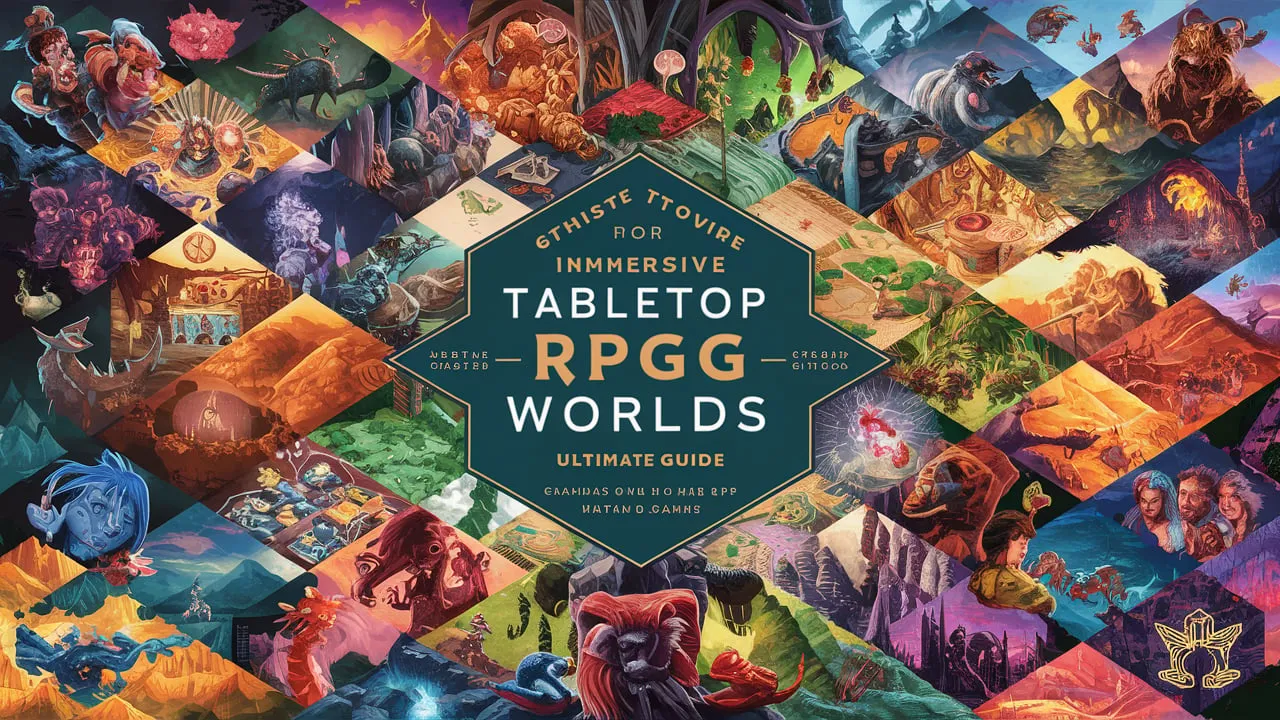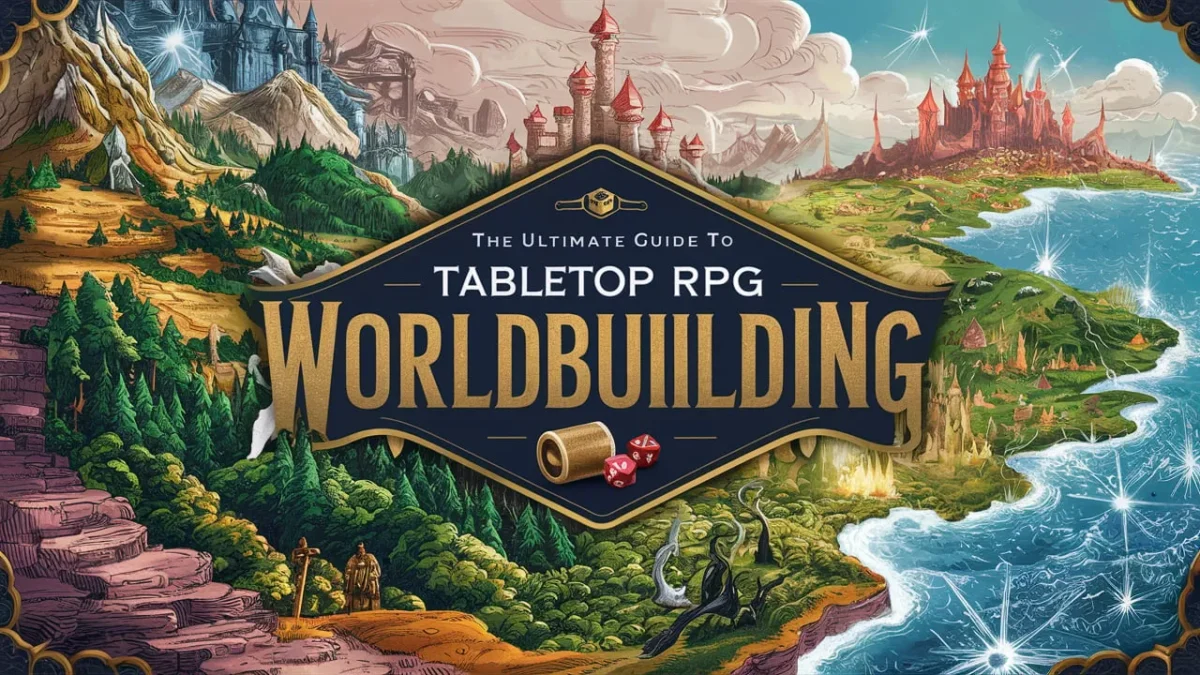Introduction
Tabletop role-playing games (RPGs) have gained immense popularity in recent years, thanks to their ability to transport players to imaginative worlds filled with adventure, excitement, and endless possibilities. At the heart of every captivating RPG experience lies the art of worldbuilding. Whether you are a seasoned game master or a budding storyteller, understanding the fundamentals of worldbuilding is essential to creating immersive and engaging tabletop RPG campaigns. In this ultimate guide, we will delve into the intricacies of worldbuilding in tabletop RPGs and provide you with a comprehensive roadmap to crafting your own captivating game world.
Understanding the Basics of Worldbuilding
Defining Worldbuilding in Tabletop RPGs
Worldbuilding is the process of constructing an imaginary world, complete with its geography, history, cultures, societies, and everything in between. It is the art of breathing life into a fictional realm and creating an immersive environment that captivates players. In tabletop RPGs, worldbuilding serves as the foundation for the game’s narrative and player interactions, setting the stage for epic quests and unforgettable adventures.
When delving into the intricate craft of worldbuilding, game masters and storytellers often start by envisioning the physical aspects of the world – its landscapes, climates, and ecosystems. They then move on to populate this world with diverse cultures, each with its own traditions, languages, and belief systems. The intricate web of social structures and power dynamics adds depth and complexity to the setting, making it feel vibrant and alive.
Importance of Worldbuilding in RPGs
Worldbuilding is a crucial component of tabletop RPGs as it sets the tone, establishes the rules, and immerses the players in a believable and captivating game world. A well-crafted setting enhances the gaming experience, fostering a sense of wonder, discovery, and agency for the players. It provides a rich backdrop for the story to unfold and serves as a conduit for character development and engagement. Without a well-thought-out world, the RPG experience can feel shallow and lacking in depth.
Furthermore, worldbuilding in RPGs allows for endless possibilities and creative freedom. Game masters have the opportunity to introduce unique elements such as magical phenomena, ancient ruins, or political intrigues that add layers of intrigue and excitement to the gameplay. Players, in turn, have the freedom to explore, interact with the world, and shape its future through their decisions and actions, creating a collaborative storytelling experience that is dynamic and unpredictable.
Starting Your Worldbuilding Journey
Choosing the Right Concept for Your World
Before embarking on your worldbuilding endeavor, it is essential to choose a concept that resonates with you and your players. Consider the genre, themes, and atmosphere that you want to explore in your RPG campaign. Will it be a high fantasy realm of magic and mythical creatures, or a dystopian future ravaged by war and technology? Selecting a concept that ignites your creativity and captures the imagination of your players will serve as a strong foundation for your worldbuilding efforts.
Establishing the Rules of Your Universe
Just like the real world, your RPG universe will have its own set of rules and mechanics. Decide what magic systems, if any, exist in your world. Determine the physical laws that govern the universe, such as the existence of faster-than-light travel or the limitations of technology. Establishing these rules creates a cohesive framework for your world and ensures consistency throughout your campaign.
Read More: The Ultimate Guide to Designing Tabletop RPG
Crafting Unique and Engaging Environments
Designing Diverse Landscapes
A well-crafted game world is filled with diverse and captivating landscapes. Consider the different regions and terrains that exist within your universe. Are there lush forests teeming with mythical creatures, treacherous mountain ranges harboring ancient secrets, or vast oceans brimming with unexplored wonders? By creating a variety of landscapes, you provide players with exciting environments to explore and interact with.
Creating Intriguing Cities and Towns
In addition to natural settings, your world will also be populated by cities, towns, and villages. These urban centers serve as hubs of activity, offering opportunities for quests, social encounters, and trade. When designing your settlements, think about the cultures, architecture, and economic systems that shape them. What notable landmarks or institutions exist in each city? Developing unique and vibrant urban environments adds depth and authenticity to your world.

Developing Cultures and Societies
Building Believable Races and Species
In most RPGs, players have the opportunity to embody a variety of races and species. Each race brings its own set of characteristics, cultures, and traditions to the world. When creating these races, strive for diversity and uniqueness. Avoid falling into tropes or stereotypes, and instead craft complex and multi-dimensional species that challenge players’ expectations. The interplay between different races and species can lead to fascinating conflicts and alliances within your RPG universe.
Formulating Social and Political Structures
Societies and political structures play a pivotal role in shaping the dynamics of your game world. Consider the different societal systems and power dynamics that exist within your universe. Are there monarchies ruled by noble families, democratic republics governed by elected officials, or tribal societies that live off the land? Develop the social hierarchies, laws, and conflicts that drive your world’s societies, making them realistic and engaging for players to interact with.
Constructing History and Lore
Creating Mythologies and Legends
The history and lore of your RPG world add depth and richness to the overall narrative. Craft compelling mythologies and legends that explain the origins of your universe, its deities, and the heroic deeds of past generations. These stories will shape the beliefs, values, and motivations of characters within your campaign. Introducing mythical creatures, legendary artifacts, and mysterious prophecies will add an air of mystique and adventure to your game.
Writing Historical Events and Conflicts
History is rife with wars, revolutions, and epic conflicts that have shaped the course of civilizations. Create a detailed timeline of historical events within your game world, highlighting the major conflicts, alliances, and turning points. This historical backdrop serves as the canvas upon which your RPG campaign unfolds, providing players with a sense of context and a deeper understanding of the world they inhabit.
Embarking on a tabletop RPG worldbuilding journey is a labor of love that requires time, creativity, and attention to detail. By understanding the fundamentals and following the steps outlined in this ultimate guide, you will be well-equipped to create a captivating and immersive game world for your players to explore and discover. Happy worldbuilding!
Conclusion
When diving into tabletop RPG worldbuilding, guides can be invaluable tools for crafting immersive and engaging game worlds. They offer structured approaches and creative frameworks, ensuring that every aspect of your setting—from its geography and history to its cultures and conflicts—is thoughtfully developed. Whether you’re a seasoned dungeon master or a newcomer to the hobby, leveraging these guides can streamline the worldbuilding process, help you avoid common pitfalls, and ultimately enhance your storytelling. By incorporating the insights and techniques found in these resources, you can create a rich, compelling world that captivates your players and elevates your RPG experience.

Leave a Reply